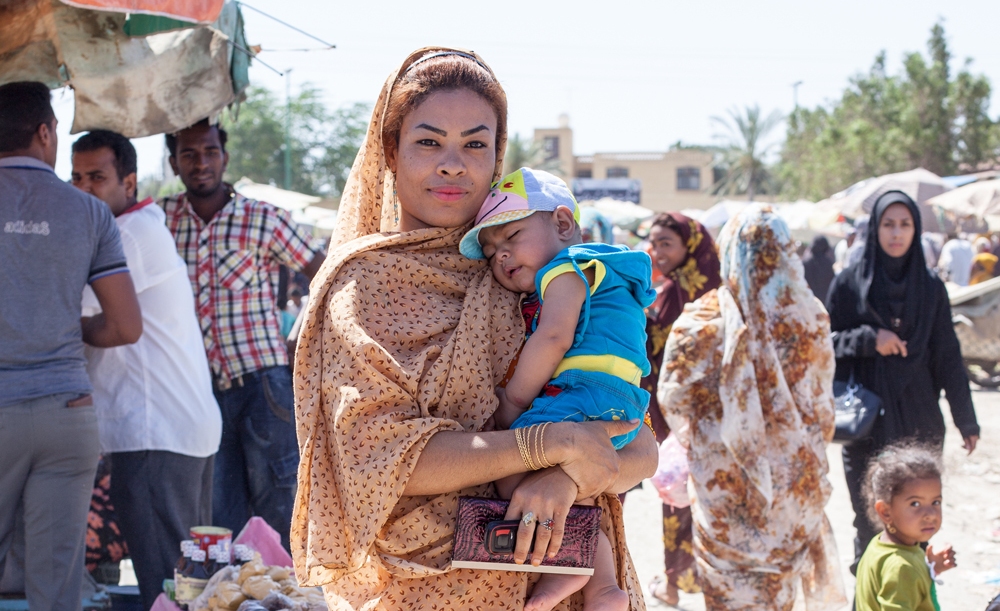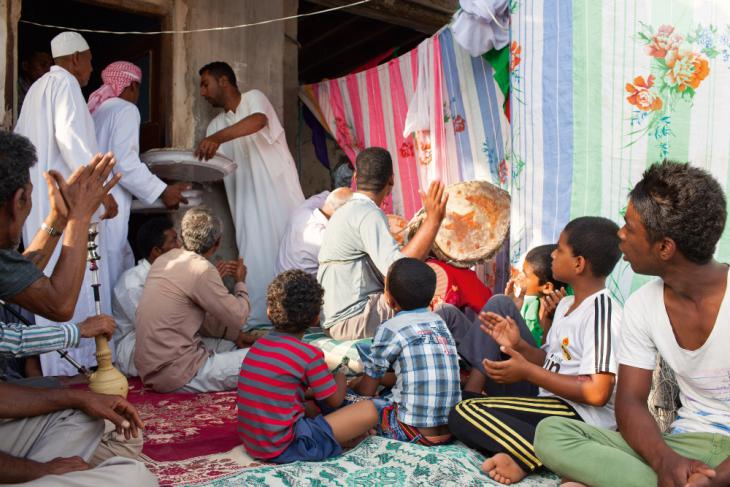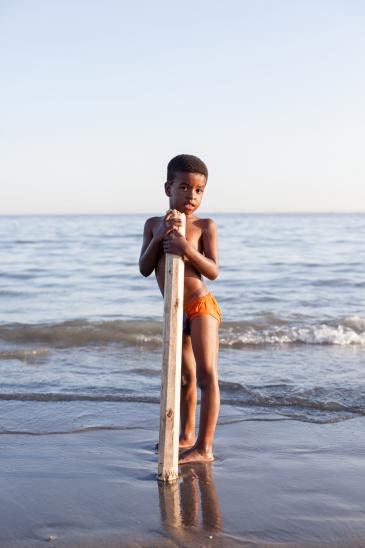The Persian Gulf′s forgotten minority

Iran′s colourful blend of peoples is a direct consequence of Persia′s checkered history. Among the ethnic groups scattered over an area four and a half times the size of Germany there is one little-known minority in Iran′s south: its Afro-Iranian community.
Iranians of African origin are mostly descendants of slaves who were used in Persia over the centuries, but can sometimes also trace their origins back to itinerant sailors and craftsmen. Today, they have Iranian names and live in the provinces of Hormozgan, Sistan, Balochistan and Khuzestan as well as in the port cities of Bandar Abbas and Abadan. Some of them have integrated with other Gulf populations; others live within their own communities.
German-Iranian photographer Mahdi Ehsaei first encountered Afro-Iranians in Shiraz, his father′s hometown. During a football match between the clubs Bargh Shiraz and Aluminium Hormozgan he filmed a group of fans cheering their home football club to a mix of Iranian and African drum beats. The scene aroused his curiosity.
In summer 2014 Ehsaei traveled to the Persian Gulf for a 2-month photo project on the Afro-Iranians. The portraits Ehsaei took were released last year in a photo book entitled ″Afro Iran″. In his photos, Ehsaei depicts the way of life of Afro-Iranian Bandaris; at the bazaar, standing in front of their cars, on the way to school. His subjects are derived from all age groups: housewives, newborns, adolescents and seniors.
Portraits of Iranians
Ehsaei′s portraits neither appear artificial nor made to look exotic. Often, the African traces are so faint that the viewer might ask himself what actually distinguishes the Afro-Iranian community from other Bandaris. In fact, children′s eyes and postures of the photographed people have an unmistakably Iranian touch, as Joobin Bekhrad, founder and editor of the online magazine ″Reorient″, remarks in his introduction to ″Afro Iran″. As Bekhrad observes, Ehsaei′s photographs are plain and simply portraits of Iranians.

″The culture of Afro-Iranians does not differ markedly from other sections of the population. Instead, the presence of Afro-Iranians in the Persian Gulf has influenced the culture of Bandaris as a whole″, says Ehsaei. Take the mournful songs of Ashura processions in Bandar Abbas for example, in which Imam Hossein is remembered with African rhythms. There are also imported African traditions like ″zar″, a folk-like kind of exorcism that is still practised today and is also observed by ethnic Iranians.
It is obvious from Ehsaei′s photos that he managed to build a relationship of trust with the people he photographed. ″It took a while to establish a connection, especially with the women of the community. But I was soon overwhelmed by their hospitality,″ recounts Ehsaei.
His favourite encounter? Ehsaei tells the story behind the photo of a small boy with slightly kinky hair who was playing on the beach in Bandar Abbas. He is looking shyly into the camera and posing with a stick in his hands. ″What I like about this photo is the emotion it conveys. The small boy is not aware that he is playing on the spot where centuries before his ancestors had to struggle to gain a foothold,″ says Ehsaei.
Slavers in the Persian Gulf
The history of slaves in the Persian Gulf pre-dates Islam. But it was only from the 16th century onwards, when European trade activities in the Persian Gulf grew exponentially, that slave trade reached an economic dimension. With the establishment of new sea routes Bandar Abbas became an important seaport. The increased volume in trade led to a high demand in labour forces and slaves.

Most of the slaves reached Persia during the Qajar period in the 19th century. Slaves in Persia converted to Islam and soon became a part of the local populace. During the Qajar era slaves were employed all around the empire, on construction sites, in palaces or as domestic servants. Slaves are also omnipresent in the photographs of the age, mostly displayed in subservient contexts, for instance as servants of an Iranian noble family.
Human beings rather than possessions
Nevertheless, in keeping with Islamic tradition, slaves were not considered as chattels – as was the case with slaves in North America – but as human beings with rights. These rights included a proper diet and clothing, as well as vocational education and hereditary rights.
The abolition of slavery in Iran was formally decided in the 1906 Constitutional Revolution, but only implemented in 1928 by the Pahlavi dynasty. After their emancipation, Afro-Iranians predominantly settled along the Persian Gulf. Generations later, it is impossible to imagine Bandari culture without them. ″In the two months I spent with Afro-Iranians, I never experienced any kind of discrimination. It struck me that the sense of being different doesn′t seem to exist anymore today,″ says Ehsaei.
Many Iranians in other parts of the country are not aware of the history of Afro-Iranians. In Iranian historiography they play only a minor role. There are few points of contacts between the majority of Iranians and Afro-Iranians, apart from the popular Bandari music which mixes African beats with Persian melodies. In cinema films, on the other hand, Afro-Iranians are rarely spotted. Only a handful of scientists and photographers have taken an interest in documenting the African heritage of Iran. But this seems slowly to be changing. Mahdi Ehsaei′s photo project goes some way, at least, towards closing a few of the gaps.
Marian Brehmer
© Qantara.de 2016
"Afro-Iran" by Mahdi Ehsaei, published by Kehrer Verlag, 96 pages, available in English & Persian, ISBN: 978-3-86828-655-7
